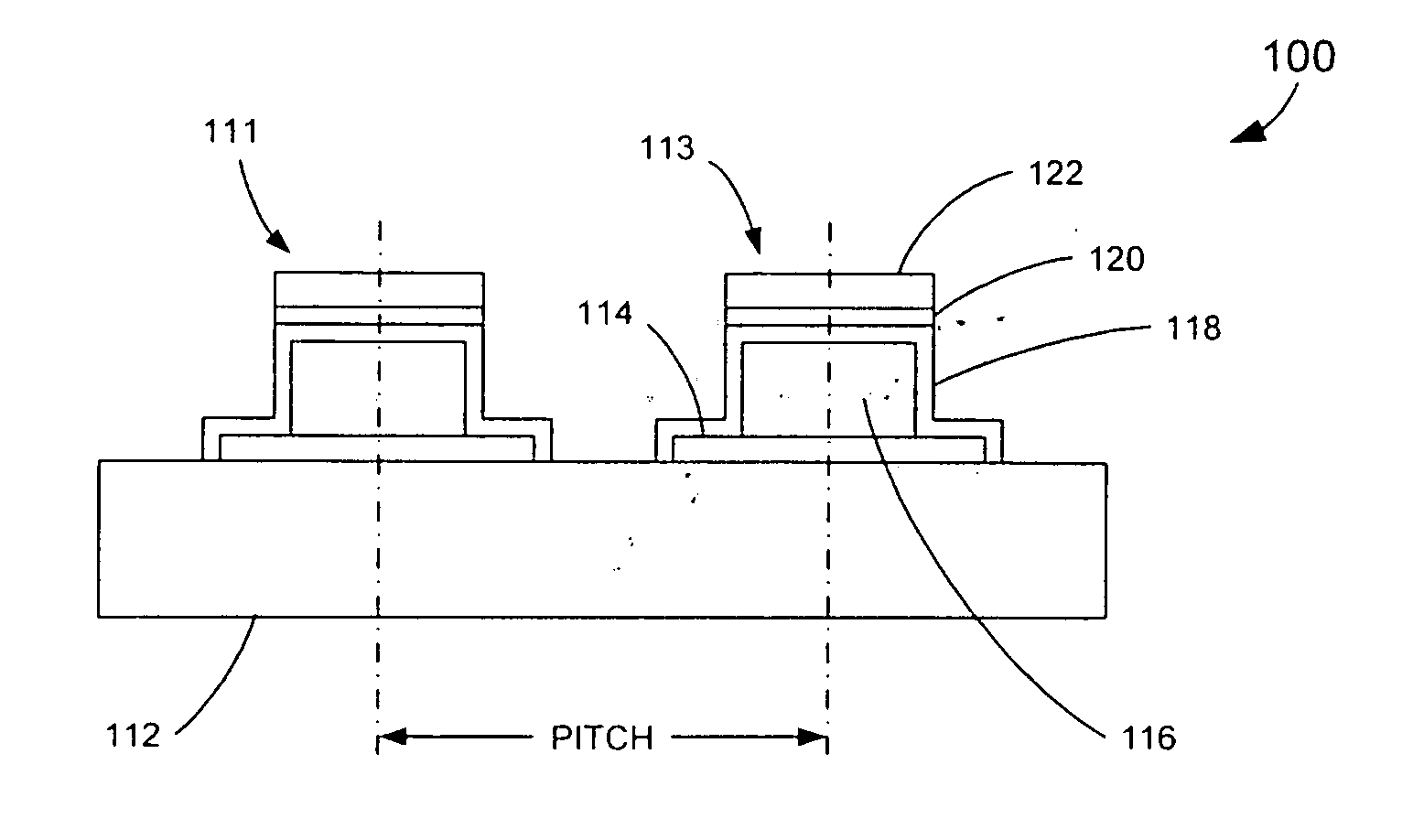Technique for defining a wettable solder joint area for an electronic assembly substrate
a technology of electronic assembly and solder joint, which is applied in the direction of non-electric welding apparatus, manufacturing tools, and soldering devices, etc., can solve the problems of insufficient use of solder stops, inability to connect conductors to fine-pitch integrated circuit chips, and significant impact on the minimum conductor width of multi-sided solder stops, etc., to achieve the effect of printing and firing traditional solder stops, additional material and processing steps
- Summary
- Abstract
- Description
- Claims
- Application Information
AI Technical Summary
Problems solved by technology
Method used
Image
Examples
Embodiment Construction
[0022] According to the present invention, a technique is disclosed herein that provides an alternative to typical printed solder stops. According to one aspect of the present invention, an electroless nickel-gold finish, which is a standard finish for copper on ceramic and has become increasingly popular for thick film conductors, is utilized. In a typical electronic assembly that utilizes thick films, a layer of palladium (Pd) is typically deposited between the nickel (Ni) and gold (Au) layers. Typical assemblies include a common base conductor layer, e.g., a copper layer, a nickel layer and a common final layer, typically of gold (Au), which is highly solderable. It should be appreciated that nickel oxidizes relatively easily and does not wet to solder in the oxidized state. According to the present invention, the oxidized nickel (or passivated nickel) is utilized to define a wettable solder joint area for an electronic assembly. Thus, according to the present invention, a zero f...
PUM
| Property | Measurement | Unit |
|---|---|---|
| Electrical conductor | aaaaa | aaaaa |
| Area | aaaaa | aaaaa |
| Wettability | aaaaa | aaaaa |
Abstract
Description
Claims
Application Information
 Login to View More
Login to View More - R&D
- Intellectual Property
- Life Sciences
- Materials
- Tech Scout
- Unparalleled Data Quality
- Higher Quality Content
- 60% Fewer Hallucinations
Browse by: Latest US Patents, China's latest patents, Technical Efficacy Thesaurus, Application Domain, Technology Topic, Popular Technical Reports.
© 2025 PatSnap. All rights reserved.Legal|Privacy policy|Modern Slavery Act Transparency Statement|Sitemap|About US| Contact US: help@patsnap.com



